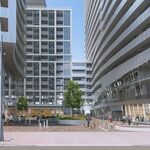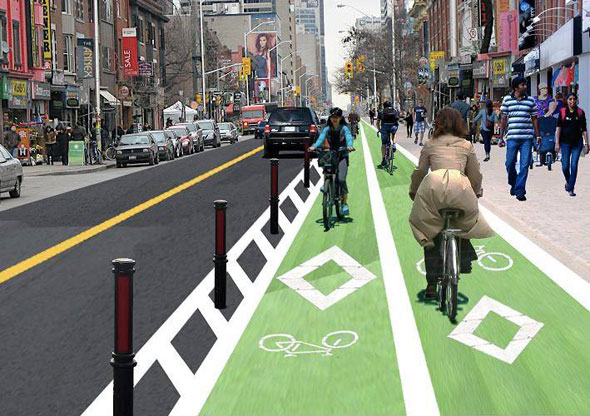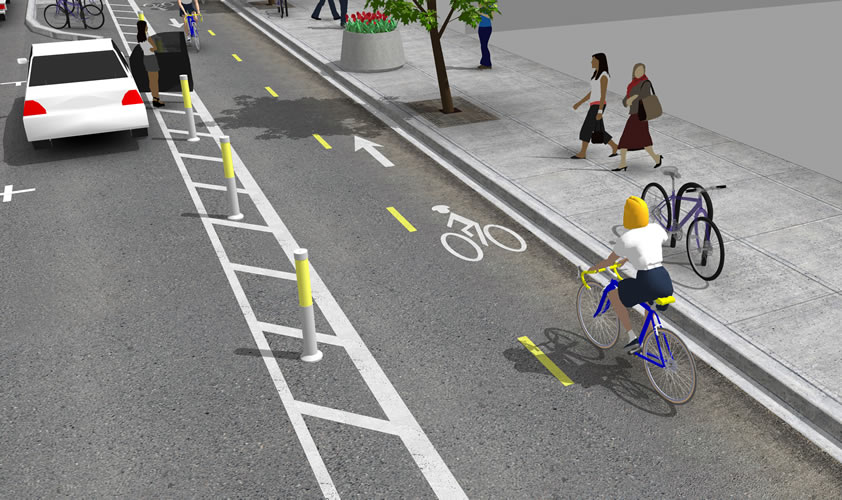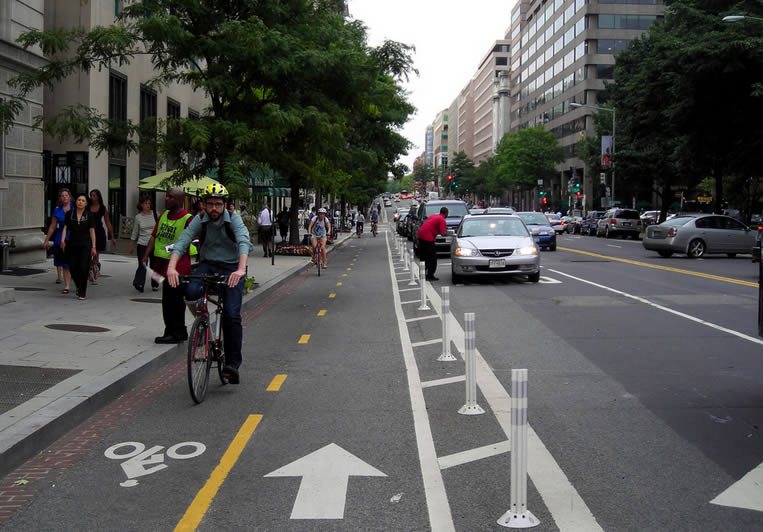The dreaded cyclist door prize is on the rise.
From 2014 to 2016 there was a 58 per cent increase in reports where car drivers or passengers opened their door and hit an unsuspecting cyclist. U.S. reports have estimated that these collisions account for 10 to 20 per cent of vehicle to bike collisions.
Jared Kolb of Cycle Toronto, the advocacy group that analyzed and publicized the information, hypothesized that the increase could partially be due to better reporting, more cyclists, and the growing popularity of ride-sharing services.
Regardless, he says more needs to be done to safeguard the city’s cyclists.
“These numbers we have are likely minimums,” he said, explaining that many collisions between bikes and cars go unreported.
“More people are riding, and doing so without the improved infrastructure they need.” Kolb added that an extended Bloor bike lane, removing on-street parking on streetcar routes, promoting the “Dutch Reach” and building out more bike lanes would help address the issue.
Kolb highlighted specific problem areas for doorings, including along downtown streetcar routes and at busy intersections like Yonge and Bloor. He added that routes with bike lanes had fewer incidents.
“Infrastructure is the number one way to prevent these collisions.”
The province
increased the fine for dooring cyclists from $60 to $365 in August 2015, along with introducing three demerit points. But so-called “doorings” still increased 19 per cent in 2016, to a total of 209 incidents.
Public works chair Jaye Robinson said the City and Toronto Police are well aware of the issue, and addressing it as part of their ongoing Road Safety Plan.
“Dooring is clearly a serious problem,” she told Metro, adding that the steep increase is a concern.
But Robinson said that after council passed the Road Safety Plan last summer, and funding was included in the budget last month, the City is ready to make progress on the issue. “We’ve got more resources to tackle this and we’re going to push ahead.”
She added that the City has sufficient resources and data to address the issue, and is looking at international best practices in places like Washington D.C., New York City and Sweden.
Metro Explains: The “Dutch Reach”
The Dutch Reach means using the far hand to open the car door, which forces an over-the-shoulder look to see what’s behind you. It’s considered a common sense technique in the bicycle-friendly Netherlands, and in 2016 a retired doctor tried to introduce the idea to Massachusetts. So far no public education campaigns have focused exclusively on the Dutch Reach, but it’s been mentioned as part of campaigns in Montréal, Toronto and San Francisco.












